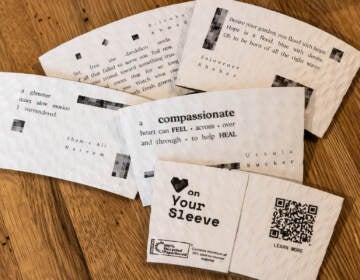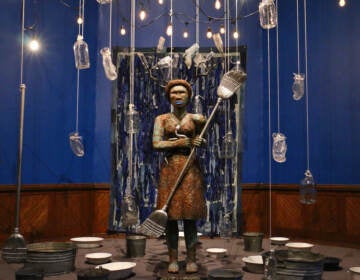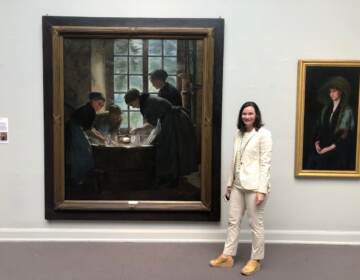Musicians and poets perform new work inspired by PAFA’s American art
A concert of poets and musicians showcases new work inspired by PAFA’s exhibition “Making American Artists.”
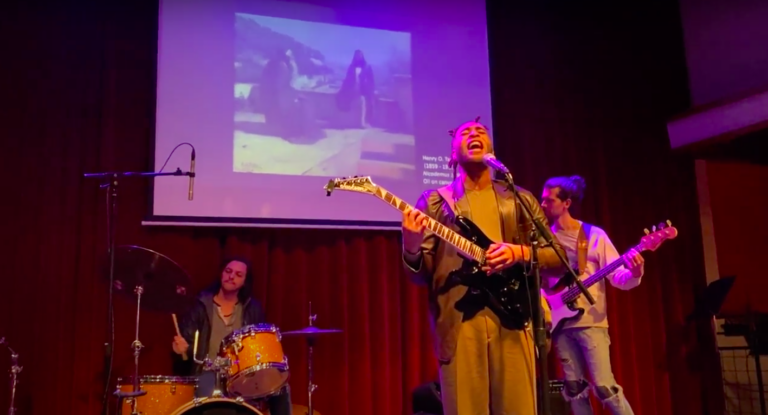
The performer is Kingsley Ibeneche, performing as part of an earlier ''Multitudes'' concert at World Cafe Live, taken from a video shot by World Cafe Life/PAFA. Henry Ossawa Tanner’s ''Nicodemus'' can be seen in the background. (Courtesy of Making American Artists)
The Pennsylvania Academy of the Fine Arts tapped into its collection of artwork to assemble Making American Artists, a 200-year overview that attempts to trace what “American art” has stood for from 1776-1976.
The show begins at a time when American art largely meant art by white men, preferably trained in Europe, and then evolved into a more expansive view of national identity, including a diversity of genders, races, and sexuality.
As part of that show, which closes April 2, PAFA partnered with World Cafe Live to showcase contemporary Philadelphia artists as part of the two-century continuum in the exhibition. “Multitudes” is a concert series wherein selected artists were asked to create new work inspired by the work on view. The final concert is Saturday evening at PAFA.
Musician and choreographer Kingsley Ibeneche took inspiration from Henry Ossawa Tanner’s “Nicodemus” (1899). It was the first painting by a Black artist acquired by PAFA in 1900. Tanner was the first Black graduate of the Academy.
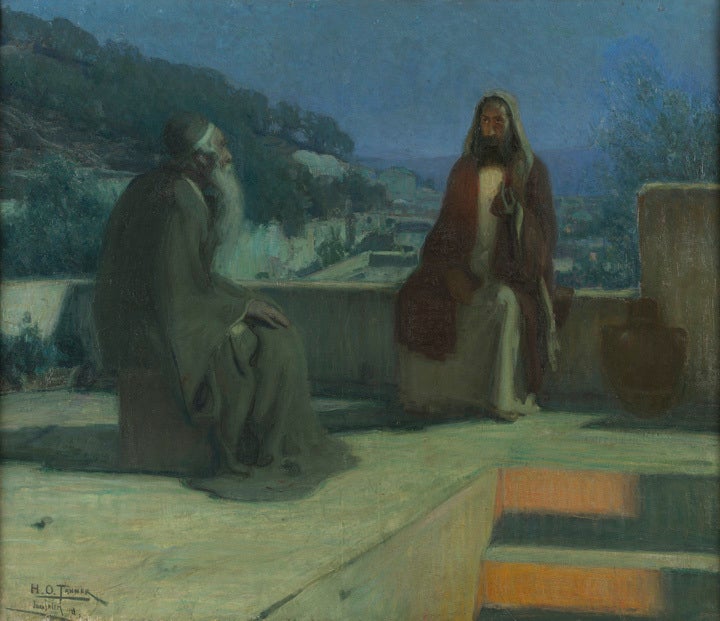
“I was really drawn by a lot of his works, not just because he was Black, which is awesome, but it was also that he’s known for using light,” Ibeneche said.
The painting depicts a nighttime Biblical scene in which Jesus is in conversation with a Pharisee, a member of an ancient Jewish sect. It was painted while Tanner was on a trip through Israel.
“It’s a beautiful painting because these two humans are illuminated and we don’t know where the light’s coming from,” Ibeneche said. “I think that’s so cool.”
Ibeneche used his reaction to “Nicodemus” and another Tanner painting, “The Banjo Player,” to finish writing two songs, which he is performing as part of “Multitudes.” At a previous concert at World Cafe Live, he put down his guitar mid-song and broke out into an improvised dance around his bandmates.
“That’s my guitar solo, my dance,” he said. “I’m not the best on guitar. I can hold down the core, the notes. But when I want to hit a solo, I usually dance.”
The dance was not planned. Ibeneche surprised the audience, his own bandmates, and even himself.
“It just came out. It wasn’t planned. It wasn’t a part of the show, and I want it to be now,” he said, promising to do it again at PAFA this weekend accompanied by piano player Ra’Quan Washington.
“Its expression highlighted in the most pure and genuine sense,” he said. “It might not be dance. I might just cry on stage. I don’t know what’ll happen this time.”
Another performer at the final “Multitude” show is poet and actress Jaylene Clark Owens. She was not able to find anything inspiring during her first tour of Making American Artists. She had to take a closer look.
“I was looking around at these huge, larger-than-life portraits, and all of the really big ones were all white women,” said Ownes, who is Black. “I felt like someone representing me was lacking in that space.”
It took a second visit for her to discover a portrait by Laura Wheeler Waring, “The Study of a Student,” that was hung outside of the main gallery space. Owens had never before seen the painting from the 1940s of a young Black woman who appears to be deep in thought, wearing a blue flower in her hair. It inspired Owens to write the poem, “Paint Me Soft.”
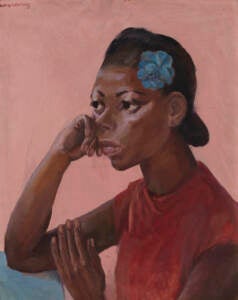
She also took inspiration from one of those white women who painted a larger-than-life portraits, Joan Brown, whose “Self-Portrait” shows the artist working in her studio while wearing an immaculate red-checked dress and heels, while below her the floor of the room is a mess of smeared paint.
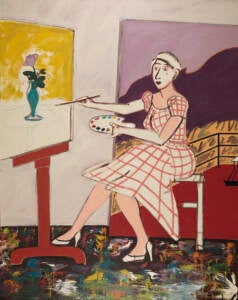
“That just really spoke to me,” said Owens, who brought Brown’s 1977 painting into the age of social media where people often carefully curate their lives online.
“Oftentimes, people see that and then think that’s all it is,” she said. “They’re like, ‘Oh, look at this person. This person has such a great life. This person is not going through the things that I’m going through.’ It’s not that they’re not going through those things. It’s just that that person is choosing not to post those online.”
The final Multitudes concert, at PAFA at 8 p.m., will also include a performance by the musical collective Ill Doots. “Making American Artists” will be on view until April 2.
WHYY is your source for fact-based, in-depth journalism and information. As a nonprofit organization, we rely on financial support from readers like you. Please give today.



